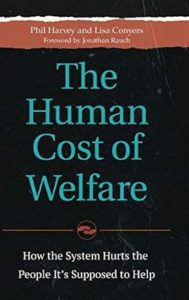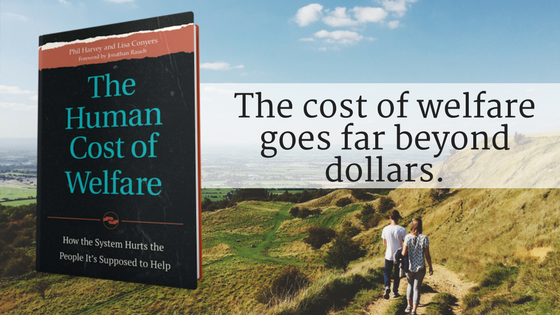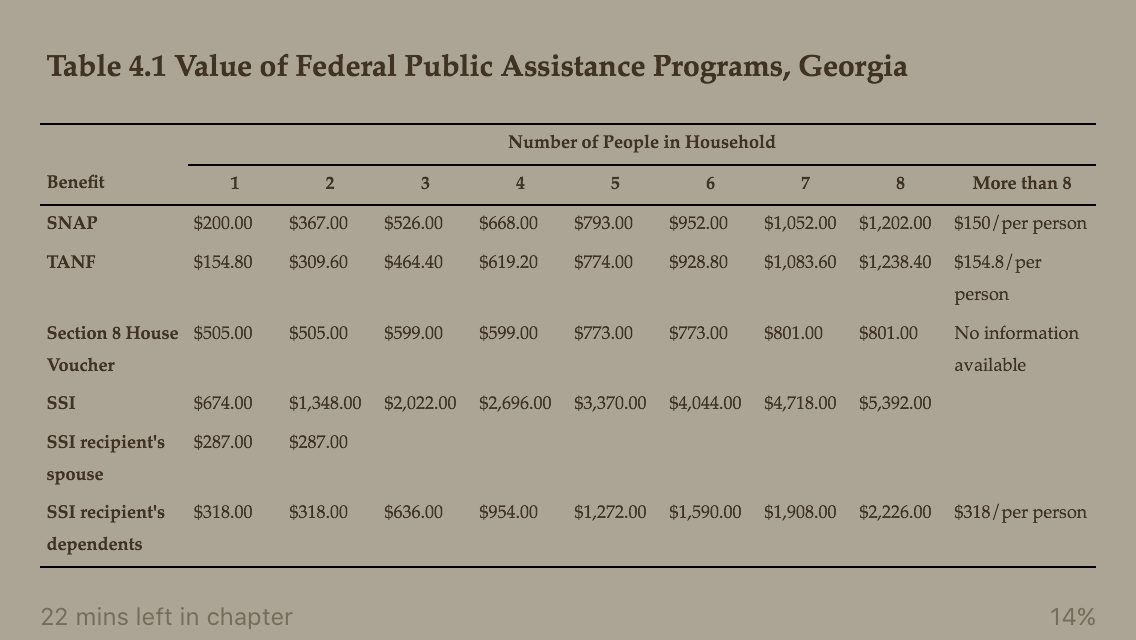Review: The Human Cost of Welfare by Phil Harvey & Lisa Conyers
There is a great deal of material from the conservative perspective about the failure of welfare, and a great deal from the liberal perspective about the moral imperatives of a safety net for America’s vulnerable citizens. But little has been written about how welfare impacts the lives and happiness of welfare recipients themselves.
What is the cost of welfare in America? If we just consider the 13 biggest “Safety Net Programs,” the cost of welfare to tax payers in 2016 alone was 740 billion dollars. If we were to include the multitude of other programs funded by the government which are for the alleviation of poverty, the cost is even greater. But is there another cost of welfare we have not considered? A cost far greater than money? Phil Harvey and Lisa Conyers propose just that in their book, The Human Cost of Welfare: How the System Hurts the People It’s Supposed to Help. To understand this cost, the authors interviewed more than 100 men and women around the country who are or were dependent on welfare. They asked questions about happiness, health, and the future, and found that welfare has an unintended negative effect on those it is supposed to help.
In 168 short pages, Phil and Lisa cover topics such as “What Does Work Have to Do with Happiness?” “A Housing System Leaves the Needy Out in the Cold,” and “WIC: Missteps with Women and Children.” Each of these topics includes personal experiences from those receiving government benefits and a wealth of research to support their findings.
One of the most compelling chapters is titled, “Marriage, Childbearing, and Teen Pregnancy.” This chapter outlines what might be the greatest human cost of welfare. Each year there are more than 300,000 babies born to teenage mothers. 90% of these teens are single and 80% of those young, single mothers end up on welfare. Today, 40.6% of the total births each year are to single mothers. Compare this to 1940 when only 3.8% of total births were to unmarried mothers. This is especially distressing when you consider the fact that single parenthood and poverty rates are strongly linked. Over the last decade, as the number of births out of wedlock increased, the poverty rate for mother-only families has climbed to 42%.
You may question, “But, what does that have to do with welfare?” The current welfare system encourages single parenthood by reducing benefits to married couples. These penalties can be substantial, especially to families claiming the Earned Income Tax Credit, or EITC, and Child Tax Credit, or CTC. For many families, it doesn’t make financial sense to get married, as a result, most are choosing to forgo marriage, and with it, the opportunity for future prosperity.
Current welfare programs, such as TANF, also encourage single women to have more children by increasing the benefits received for each child added to the household. “More kids equals more assistance,” Phil and Lisa state (see chart below).
The damage done to the family unit alone is a costly price for welfare, but when you count the loss of happiness, health, independence, freedom, and overall wellbeing of those on governmental assistance programs, the human cost of welfare is far too great to accept.
The cost of welfare goes far beyond dollars. There is a human cost to welfare that must be considered. To learn more about “The Human Cost of Welfare” pick up Phil and Lisa’s book, The Human Cost of Welfare. It’s time to rethink how we help those in need; it is clear that welfare is far too costly.
 The Human Cost of Welfare can be purchased at Amazon. If you purchase the book through this link, True Charity will earn a small amount as an Amazon Associate
The Human Cost of Welfare can be purchased at Amazon. If you purchase the book through this link, True Charity will earn a small amount as an Amazon Associate
This article is just the tip of the iceberg for the practical resources available through the True Charity Network. Check out all of the ways the network can help you learn, connect, and influence here.
Already a member? Access your resources in the member portal.





